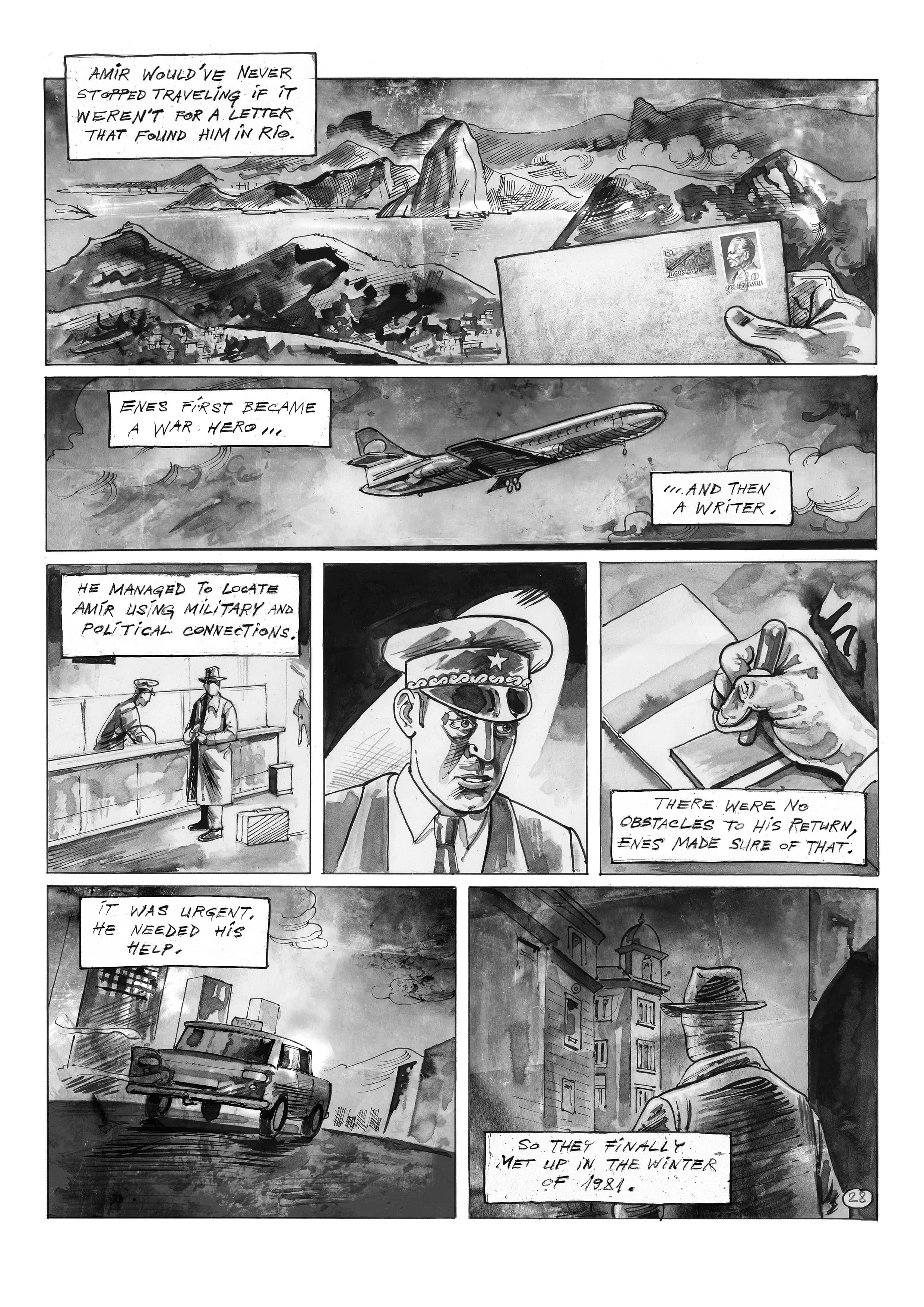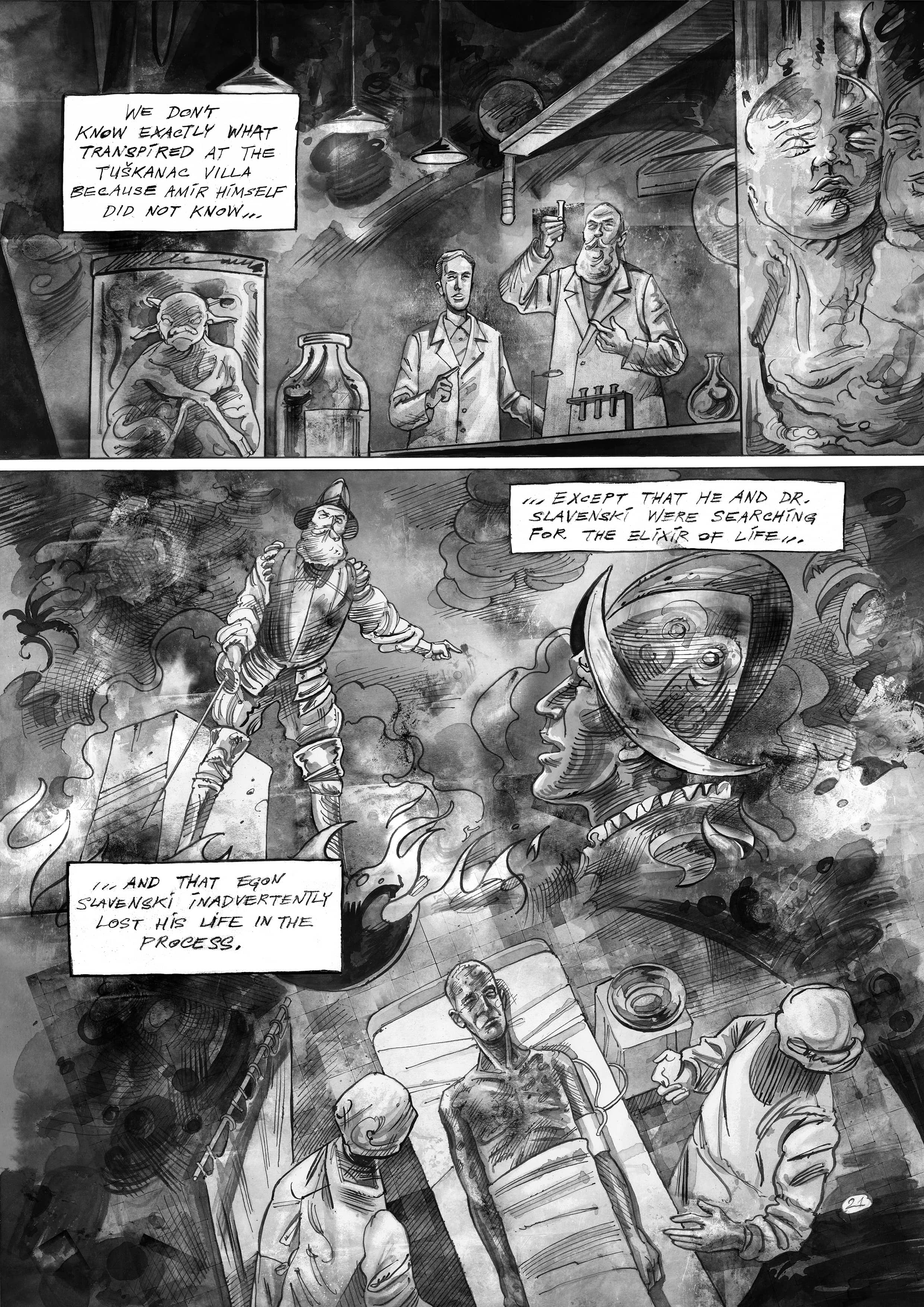Posts filed under 'graphic novel'
Graphic Novel in Translation: Karim Zaimović’s “The Invisible Man from Sarajevo,” Part V
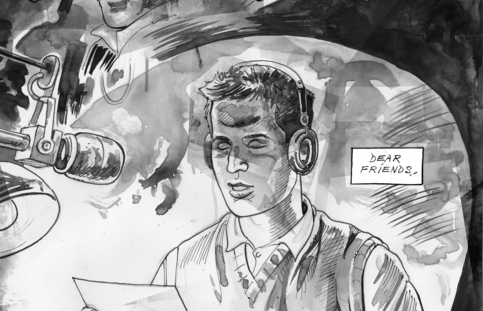
Part V in Asymptote blog's first-ever graphic novel in translation
Graphic Novel in Translation: Karim Zaimović’s “The Invisible Man from Sarajevo,” Part IV
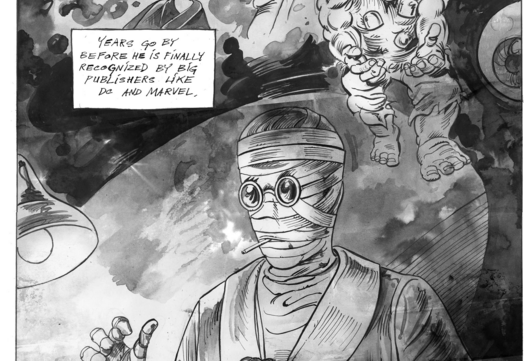
Part IV in Asymptote blog's first-ever graphic novel in translation
Graphic Novel in Translation: Karim Zaimović’s “The Invisible Man from Sarajevo,” Part III
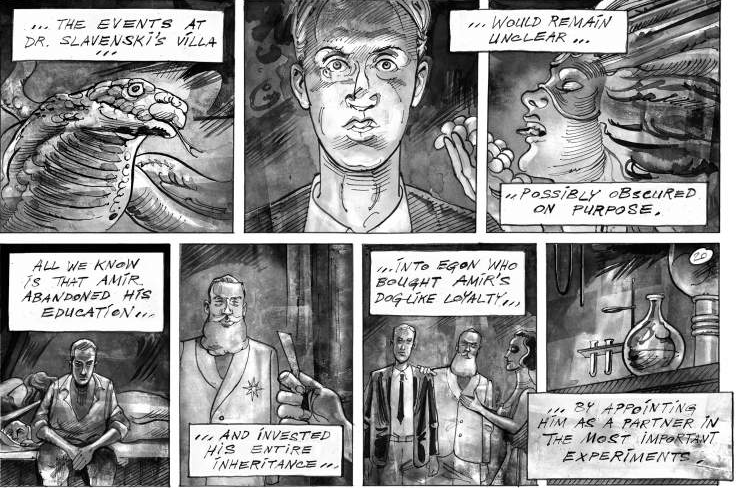
Part III in Asymptote blog's first-ever graphic novel in translation
Click here for Parts I and II in this series.
Graphic Novel in Translation: Karim Zaimović’s “The Invisible Man from Sarajevo,” Part II
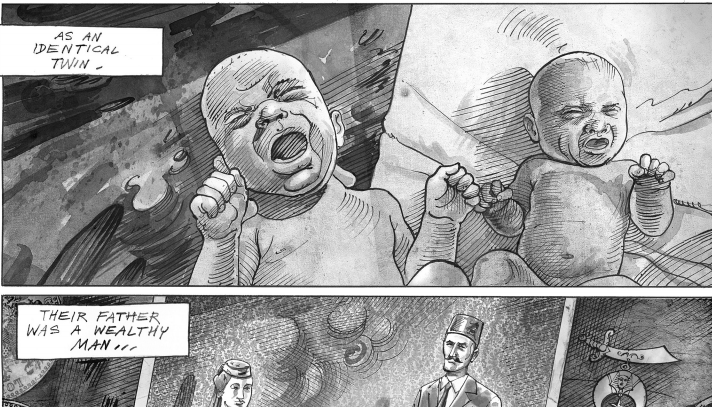
Part II of Asymptote blog's first-ever graphic-novel-in-translation
For Part I in this series, click here.






*****
Download part one, part two, and part three.
Karim Zaimović (1971-1995) was a comic strip artist and writer for the weekly magazine BH Dani in Sarajevo. During the war he hosted a radio show on Radio Wall, Sarajevo, called “Joseph and His Brothers.” At 24, he was killed in Sarajevo, in August 1995, only three months before the Dayton Peace Accords brought an end to the fighting. His stories and the transcripts of his radio shows were lovingly assembled in the book, The Secret of Raspberry Jam, by his friends and colleagues, and were produced for the stage in a play of the same name by theater director Selma Spahić.
Aleksandar Brezar was born in Sarajevo in 1984. He has worked as a journalist at Radio 202 and a translator on several documentary films and other film-related projects for PBS, the United States Holocaust Memorial Museum, and Al Jazeera English, among others. His translations have appeared in the Massachusetts Review, Brooklyn Rail, Asymptote, Peščanik, and Lupiga. His graphic novel adaptation of Karim Zaimović’s story “The Secret of Nikola Tesla,” illustrated by Enis Čišić, was nominated for a Pushcart Prize in 2015.
Boris Stapić is a graphic designer and illustrator from Sarajevo. He studied in Zagreb, Croatia, at the School of Applied Arts and Design, and at the Academy of Fine Arts in Sarajevo, Bosnia and Herzegovina. He has worked at several advertising agencies as a designer and creative director. Boris has co-founded the TripleClaim Game Collective, a video game, app, and new media studio. Of the adaptation, he says, “adapting the original text was a great challenge because Karim’s stories seem to arise from an external creative impulse. They are a melting pot of ideas, obsessions and anxieties of the entire twentieth century, and a playful and engaging literary game of motifs and intimate fascinations.
European Days of Literature 2015, “The Migrants:” A Dispatch
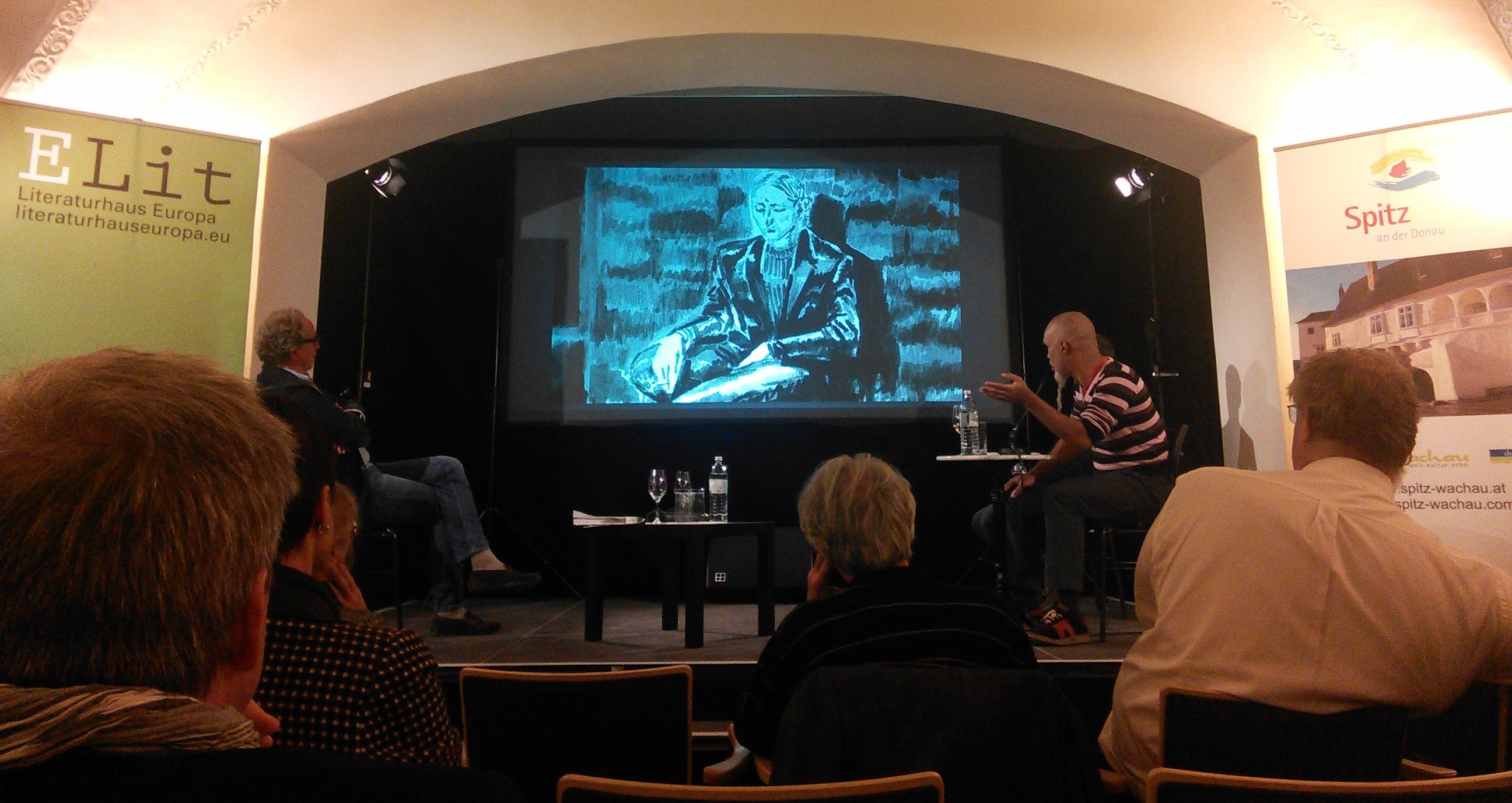
"When people are in a 'swarm,' they aren’t people."
Every year since 2009, writers, critics, and literature lovers have been flocking to the Austrian region of Wachau for the European Days of Literature. Late this October, I was fortunate to spend three glorious autumn days surrounded by vineyards in Spitz and Krems on the Danube, to talk about all things literary and listen to authors read from their works, all liberally sprinkled with local Grüner Veltliner. Literature was center stage throughout—and there was a perfect balance between readings, panel discussions, informal chats and the picturesque setting—no wonder many of the participants have been coming year after year.
The overarching theme of this year’s gathering—The Migrants (Die Ausgewanderten)—was chosen with a view to discuss the ways European literature has been changing through and along with the increasing migration of authors. Little did the organizers know that the symposium would take place at a time when migration dominates the media headlines as thousands of desperate refugees risk their lives to cross the Mediterranean and trek through Europe seeking sanctuary, putting the old continent’s humanitarian values, tolerance and unity to a test and threatening the very foundations of the European Project.
“Some of the best writing in Europe today is migrant writing,” said writer AL Kennedy, who tries not to define herself as having a specific nationality. In her powerful keynote speech (podcast recording here) she tackled the current migration crisis head on: “Between my first draft and my last a photograph of a small boy made it to headlines of many newspapers which had, only hours before, been pouring out hatred at refugees as a moral, cultural, biological and spiritual threat. As David Cameron put it: ‘a swarm of people.’ When people are in a swarm, they aren’t people. They are both of an alien species and a danger. When words put them in a swarm, they don’t receive the real world’s help.”
Practising art alone is not enough at times like these, she argued in her impassioned address, for “true art is not an indulgence but a fundamental defence of humanity.” She challenged writers to take on a more activist stand, using tweets, poetry, and bestselling novels, to create “50 shades of refugee.“
Contributing a Voice: Interviewing Guest Artist Shuxian Lee
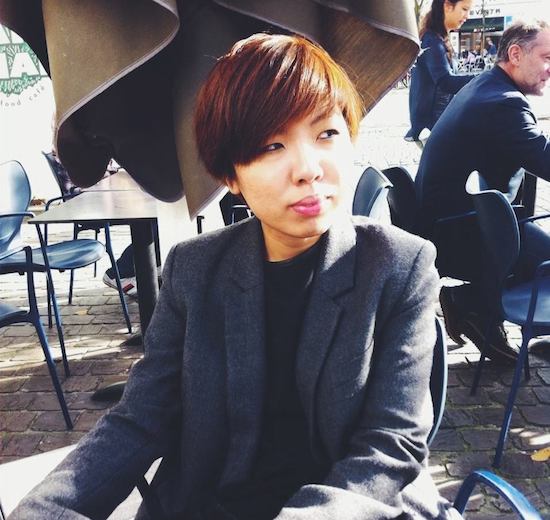
“I believe in at least making work about what I have felt or experienced or strongly believe in. Only then do I feel the urge to make art at all.”
Antwerp-based illustrator Shuxian Lee is Asymptote’s guest artist for the January issue. Her joyous, Escher-esque cover image is perfect for our 4th anniversary, while her beautiful, evocative, and often poignant illustrations accompany a total of seventeen texts. I interview her about her process and inspirations, and find out more about her graphic novels.
Berny Tan: I find your illustrations incredibly rich in both texture and colour. Could you take us through your process of conceiving and executing each piece?
Shuxian Lee: I’m quite a visual person—when I read something or feel something, I get these viewpoints in my head that are sometimes quite filmic and are related to a certain mood. Sometimes, when I come across certain expressions, I’m reminded of certain artworks or patterns that inspire me. I love to draw references to paintings because painters (mostly 19th- and 20th-century ones) are some of my biggest inspirations and first loves!
Once I get this image in my head, then I’ll sketch thumbnails of some of the ideas—though to be honest, I’m quite lazy about this part because I usually already have the finished composition in my head. Next, I look for reference images for colour, gesture or to get the perspectives right, then I start sketching. I usually make my own reference images too, and I rely a lot on my partner (or myself) as a model for my characters.
If the sketch works, I get started with the inking, then I scan it and colour it in Photoshop. I love organic textures of paint and dirt and brush marks, so I try to integrate that during the digital colouring too. In general, I work with non-digital mediums, but it’s nice to discover ways to replicate the non-digital look on Photoshop. I actually only started using Photoshop to colour a few years ago, so I’m still figuring out lots of things.

